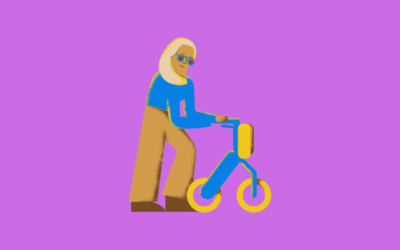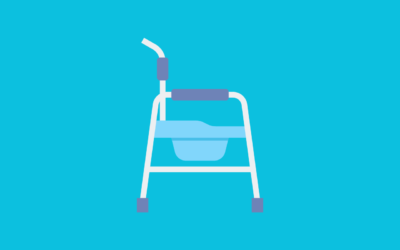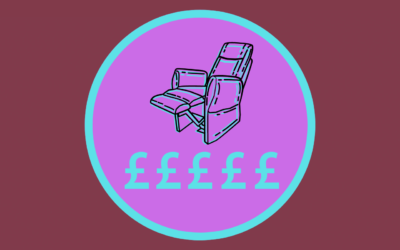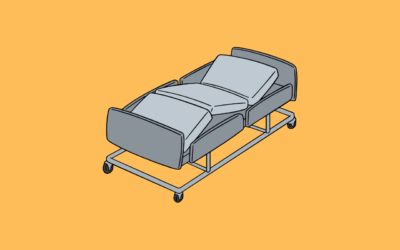Key Takeaways For Best Mobility Aids For The Home
Best mobility aids for the home offer support and assistance for individuals with mobility limitations.
They feature sturdy construction and ergonomic designs for ease of use.
With various options, finding the perfect mobility aid to suit your home and needs is convenient and practical.
Top Mobility Aids For The Home
Mobility aids are essential for enhancing the quality of life for individuals with mobility challenges, allowing them to navigate their homes safely and independently. From simple tools like grab bars to more advanced equipment such as stairlifts, numerous options are available to accommodate various needs and preferences. In this informative guide, we will explore the importance of mobility aids for the home, critical considerations for selecting them, and top recommendations to help you choose the best solutions for improved accessibility and mobility.
Understanding the Importance of Mobility Aids
Mobility aids offer numerous benefits that contribute to the well-being and independence of individuals with mobility limitations:
Enhancing Safety
One of the primary functions of mobility aids is to enhance safety by reducing the risk of falls and accidents. Grab bars, handrails, and walking aids provide support and stability, allowing individuals to move around their homes confidently and safely.
Promoting Independence
By assisting with tasks such as walking, standing, and transferring, mobility aids empower individuals to perform daily activities independently. This independence is essential for maintaining dignity and autonomy, fostering a sense of self-reliance and control over one’s environment.
Improving Accessibility
Mobility aids make homes more accessible for individuals with disabilities or mobility impairments, allowing them to navigate various areas of the house quickly. Equipment such as ramps, stairlifts, and adjustable furniture ensure that every home part is accessible and functional for all residents.
Key Considerations When Selecting Mobility Aids
When choosing mobility aids for the home, consider the following factors to ensure they meet your specific needs and preferences:
1. Mobility Requirements
Assess your mobility limitations and requirements to determine which types of aids will best address your needs. Consider balance, strength, and range of motion to identify the most suitable solutions for improving mobility and independence.
2. Home Environment
Consider your home’s layout and features when selecting mobility aids. Consider whether you need aids for navigating stairs, accessing bathrooms, or moving between rooms. Choose equipment compatible with your home’s layout and design to ensure optimal functionality and safety.
3. Comfort and Convenience
Prioritise comfort and convenience when choosing mobility aids. Opt for equipment with ergonomic designs, adjustable features, and cushioned surfaces to ensure maximum comfort during use. Consider factors such as handle grips, seat padding, and weight capacity to enhance usability and user satisfaction.
4. Durability and Quality
Invest in high-quality mobility aids built to last and withstand daily use. Look for products made from durable materials with sturdy construction and reliable mechanisms. Choose reputable brands and products with positive reviews to ensure reliability and longevity.
Top Recommendations for the Best Mobility Aids For The Home
Now, let’s explore some top recommendations for essential mobility aids that can improve accessibility and mobility within the home:
- Grab Bars and Handrails
- Walking Aids (e.g., walkers, rollators)
- Wheelchairs and Mobility Scooters
- Stairlifts and Chairlifts
- Ramps and Threshold Bridges
- Adjustable Beds and Furniture
- Bathroom Safety Equipment (e.g., shower chairs, raised toilet seats)
Enhancing Accessibility and Independence at Home
Mobility aids are essential for individuals with mobility challenges, providing support, safety, and independence within the home environment. By understanding the importance of mobility aids, considering key factors when selecting them, and exploring top recommendations for essential equipment, you can create a more accessible and inclusive home that meets the needs of all residents. Invest in quality mobility aids that address your specific requirements and empower you to navigate your home with confidence and ease.
Frequently Asked Questions about Best Mobility Aids For The Home
What are mobility aids for the home?
Mobility aids for the home are devices and equipment designed to assist individuals with mobility limitations in navigating and performing everyday tasks within their living environment. These aids range from simple tools like grab bars and walking canes to more complex devices like wheelchairs, mobility scooters, and stairlifts.
What are the benefits of using mobility aids in the home?
Using mobility aids in the home offers several benefits, including:
- Enhanced independence: Mobility aids enable individuals with mobility challenges to perform daily activities and move around their homes with greater ease and independence.
- Improved safety: Aids such as grab bars, handrails, and ramps provide support and stability, reducing the risk of slips, falls, and accidents in the home.
- Increased accessibility: Home mobility aids help make various areas of the home, including bathrooms, stairways, and doorways, more accessible to individuals with mobility limitations, allowing them to navigate their living spaces more freely.
- Reduced strain on caregivers: Mobility aids can lessen the burden on caregivers by empowering individuals with mobility issues to perform tasks independently, thus reducing the need for constant assistance.
- Promotion of physical activity: Certain mobility aids, such as walkers and exercise equipment, encourage individuals to engage in physical activity and maintain or improve their mobility and overall health.
What types of mobility aids are available for the home?
Several types of mobility aids are available for use in the home, including:
- Walking aids: These include canes, walkers, and rollators, which provide support and stability while walking and navigating indoor spaces.
- Transfer aids: Devices such as transfer benches, bed rails, and lift chairs assist individuals in transferring between different surfaces or positions, such as from a wheelchair to a bed or from a sitting to a standing position.
- Accessibility aids: These aids, such as stairlifts, wheelchair ramps, and grab bars, help make various home areas more accessible to individuals with mobility challenges.
- Personal care aids: Devices like shower chairs, raised toilet seats, and adaptive dressing aids aid individuals in performing personal hygiene and grooming tasks safely and independently.
- Assistive technology: This category includes devices like smart home systems, voice-activated assistants, and wearable trackers, which can help individuals with mobility limitations manage daily tasks and activities more efficiently.
How do I choose the right mobility aids for my home?
When selecting mobility aids for your home, consider the following factors:
- Individual needs: Assess your specific mobility limitations and requirements, including the type and severity of your condition and any physical limitations or challenges you may face.
- Home environment: Evaluate the layout and features of your home, including doorways, stairways, bathroom configurations, and flooring types, to determine which areas may require accessibility modifications or aids.
- Safety: Choose mobility aids prioritising safety and stability, with features such as non-slip surfaces, sturdy construction, adjustable height settings, and secure attachment mechanisms.
- Comfort: Look for aids that are comfortable to use and ergonomically designed to reduce strain and fatigue, with features such as padded seats, cushioned handles, and adjustable support options.
- Ease of use: Select aids that are easy to operate, maintain, and transport, with intuitive controls, lightweight construction, and simple assembly and adjustment processes.
- Budget: Consider your budget constraints and explore options within your price range, balancing cost considerations with the quality, durability, and features of the mobility aids you select.
How do I install and maintain mobility aids in my home?
To install and maintain mobility aids effectively in your home, follow these tips:
- Installation: Follow the manufacturer’s instructions for installing each mobility aid securely and correctly, ensuring proper alignment, attachment, and stability. If unsure, seek assistance from a professional or caregiver to ensure safe installation.
- Maintenance: Regularly inspect your mobility aids for signs of wear, damage, or malfunction, such as loose screws, worn-out parts, or frayed cables. Clean and lubricate moving parts as needed and replace any worn or damaged components to maintain safety and functionality.
- Accessibility: Periodically review and adjust the placement and configuration of your mobility aids to ensure they continue to meet your changing needs and accommodate any modifications to your home environment.
- User education: Ensure that anyone using the mobility aids in your home, whether yourself, family members, or caregivers, is adequately trained in their operation, safety features, and maintenance requirements. Provide instruction and assistance as needed to ensure safe and effective aid use.
Top Mobility Aids For The Home
Explore More Home Mobility Solutions
- Best Bathroom Mobility Aids – Discover essential aids for making your bathroom safer and more accessible.
- Best Bed Rails – Find bed rails designed to improve safety and ease of movement in bed.
- Best Toilet Aids – Learn about aids that enhance toilet accessibility and comfort.
- Best Grab Rails – Explore grab rails that offer stability and support in various areas of the home.












